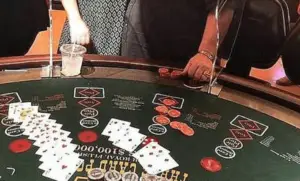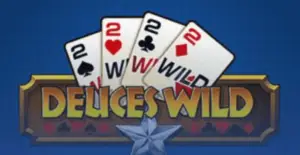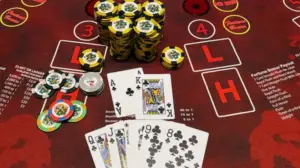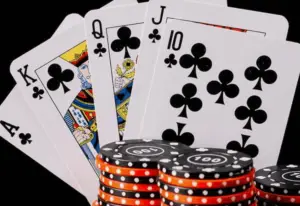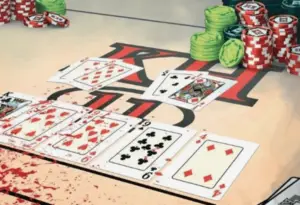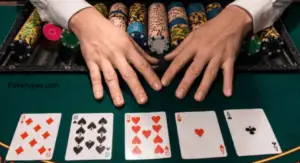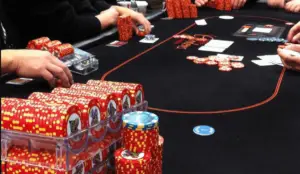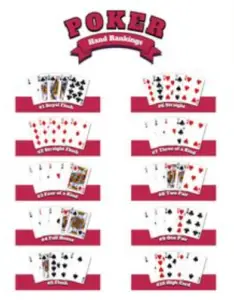Poker has emerged as one of the world’s most captivating card games, with Texas Hold’em leading as the most popular variant played today.
The game combines elements of skill, strategy, and chance, making it accessible for beginners while offering deep complexity for advanced players.
Over 40% of online poker players are between ages 18-25, highlighting its strong appeal to younger generations. The game’s core mechanics involve players being dealt cards and betting through multiple rounds to create the best five-card hand.
While the rules may seem complex on paper, the actual gameplay becomes intuitive once you start playing.
The poker boom of 2003-2006 dramatically increased the game’s popularity, particularly after Chris Moneymaker’s historic World Series of Poker win in 2003.
Today, poker can be played in various formats including cash games, tournaments, and online platforms, with different betting structures like no-limit, pot-limit, and fixed-limit.
If you want to learn how to play poker in a casino, home game, or online, understanding the basics is the first step.
The Basics of Poker
The game of poker revolves around a simple yet engaging objective – winning the pot, which contains all the bets made during a hand.
Players can achieve victory in two ways: by having the highest-ranking hand at a showdown or by making strategic bets that force all opponents to fold.
Hand Rankings and Probability
The hierarchy of poker hands follows a strict order, with the Royal Flush reigning supreme at a rare 0.000154% probability.
Following this are the Straight Flush, Four-of-a-Kind, Full House, Flush, Straight, Three-of-a-Kind, Two Pair, One Pair, and High Card.
The most common starting hand that players hope for is Pocket Aces, which gives you the strongest pre-flop position.
Basic Gameplay Structure
A standard poker hand begins with the dealer shuffling a 52-card deck and distributing hole cards to each player. In Texas Hold’em, the most popular variant, players receive two private cards.
The game then progresses through multiple betting rounds: pre-flop, flop, turn, and river. During each round, players can check, bet, raise, or fold depending on their hand strength and strategy.
The betting structure forms the backbone of poker strategy. Players must post mandatory bets called blinds to start the action. During each betting round, players can either match the current bet (call), increase it (raise), or surrender their cards (fold).
The size of bets typically increases as the hand progresses, creating larger pots and more significant decisions.
Step-By-Step Guide to Play Poker
Now that the rules have been understood, it is time to learn how the poker game is played. Here’s a simple way for beginners to learn how to play poker.
Betting Structure
The game of poker follows a structured sequence of betting rounds, starting with the pre-flop phase where players receive their hole cards.
The small blind and big blind post mandatory bets, with the big blind typically being twice the small blind amount.In a standard $1/$2 game, the small blind posts $1 and the big blind $2.
Pre-flop Action
After receiving two hole cards, players begin the first betting round. The action starts with the player to the left of the big blind, who can either call the big blind amount, raise, or fold.
Each player must at least match the current bet to stay in the hand. A typical pre-flop raise in a $1/$2 game might be $6-$8.
The Flop
Once pre-flop betting concludes the dealer reveals three community cards face-up on the board, known as the flop.
This begins the second betting round, starting with the first active player to the dealer’s left. Players can now check if no bet has been made, or place bets based on their hand strength. The pot size often determines bet sizing, with standard bets ranging from half to full pot.
Turn and River Streets
The Turn (Fourth Street) and River (Fifth Street) each introduce one additional community card, with betting rounds following each card. These streets typically see larger bets as the pot grows.
On the turn, players must carefully consider both their current hand strength and potential river cards before making decisions.
Showdown Mechanics
If multiple players remain after the river betting round, the hand proceeds to showdown. All remaining players reveal their hands, combining their hole cards with the community cards to make the best possible five-card hand.
The player with the highest-ranking hand wins the entire pot. In case of identical hands, the pot is split equally among winning players.
Important Poker Concepts
As you learn poker, you need to know certain concepts that you need during different stages. Here are a few concepts to consider:
Understanding Blinds
The poker blind system serves as the foundation of modern poker gameplay. Two mandatory bets – the small blind and big blind– are placed by players to the left of the dealer button before any cards are dealt.
In a typical $1/$2 game, the small blind posts $1 while the big blind posts $2, creating an initial pot that drives action. These positions rotate clockwise after each hand, ensuring all players contribute equally over time.
Table Stakes Rule
The table stakes principle is a fundamental poker rule that prevents players from being forced out of hands by bets they cannot match.
Players can only bet with the chips they had when the hand began.
For example, in a $500 maximum buy-in game, if you start a hand with $300, you cannot add more chips until the hand is complete.
This rule creates a level playing field and prevents wealthy players from overwhelming opponents with larger stacks.
Art of Bluffing
Bluffing represents the psychological warfare aspect of poker, where players bet aggressively with weak hands to force opponents to fold stronger ones. Successful bluffs typically occur in about 25-30% of hands. The most effective bluffing spots include:
Semi-bluffs with drawing hands
Position bluffs from late position
Continuation bets after showing previous strength
Calculating Poker Equity
Poker equity refers to your mathematical chance of winning a hand at any given moment. For instance, a pair of pocket aces has approximately 85% equity against a random hand preflop .Understanding equity helps make profitable decisions:
Pot odds guide whether to call based on the price to continue
Implied odds factor in potential future bets you might win
Expected value combines your equity with the current pot size
Players should aim to make decisions that maximize their equity realization over time. This means folding marginal hands out of position and playing aggressively with strong holdings when in position. The concept of equity forms the mathematical backbone of strategic poker play.
Popular Poker Variants
Texas Hold’em
Texas Hold’em stands as the most widely played poker variant worldwide. Players receive two private hole cards and use them in combination with five community cards to create their best hand.
The probability of being dealt premium hands like Pocket Aces is approximately 0.45%, making them highly coveted starting hands.
The game features four betting rounds: pre-flop, flop, turn, and river, with players having the option to check, bet, raise, or fold at each stage.
Omaha
Omaha poker differs from Hold’em by dealing four-hole cards to each player, though players must use exactly two of them along with three community cards to make their hand.
The most popular version is Pot Limit Omaha (PLO), which creates larger pots and more action-packed games.
The best-starting hand in Omaha typically consists of A♣A♥K♣K♥, offering multiple strong possibilities for both high and low hands.
Due to the additional hole cards, players have more drawing possibilities, with flush draws and straight draws occurring more frequently than in Hold’em.
Seven Card Stud
Seven Card Stud represents a more traditional poker variant where players receive seven unique cards throughout the hand, with no community cards shared between players.
The probability distributions show interesting statistics: Two Pairoccurs in approximately 23.5% of hands, while Four of a Kind appear in only 0.17% of ha.
Players receive three cards initially (two face down, one face up), followed by four more cards dealt one at a time, creating a more complex strategic environment than community card games.
The game requires careful attention to exposed cards and the ability to track opponents’ possible holdings.
Tips for Beginners
Starting Stakes
For new players, beginning with micro-stakes games or free-to-play options provides the ideal learning environment. Start with stakes like $0.01/$0.02 online or $1/$2 live games where mistakes won’t cost you significant money.
Statistics show that over 90% of successful poker players started at these lower limits, allowing them to develop fundamental skills without risking their entire bankroll.
Bluffing Strategy
Selective bluffing is crucial for beginners. While TV shows highlight dramatic bluffs, successful players typically bluff in only 25-30% of their hands.
Focus on making value bets with strong hands rather than trying to deceive opponents. The most effective bluffs occur in late position when opponents show weakness, particularly on dry boards that are unlikely to have helped your opponents.
Hand Selection
Playing a tight-aggressive style means being highly selective with starting hands. Focus on playing premium hands like pocket pairs (88+) and strong broadway cards (AK, AQ, KQ) from the early position, while expanding your range slightly in later positions.
Beginners should aim to play approximately 15-20% of their starting hands, folding the remaining 80-85% to maintain a profitable strategy.
Positional Awareness
Understanding table position dramatically impacts win rates. Statistics show that players in late position (button and cutoff) win approximately 60% more than those in early position.
The button is the most profitable position, allowing you to act last post-flop and gather information from opponents’ actions.
When playing from an early position, tighten your starting hand requirements significantly, as you’ll be forced to act first on all subsequent betting rounds.
Conclusion
Poker combines skill, strategy, and social interaction, making it an engaging game for players of all levels.
Understanding the basic hand rankings from Royal Flush (0.000154% probability) to High Card forms the foundation for success.
The game’s popularity continues to grow, with over 100 million active players worldwide.
Whether playing cash games or tournaments, success comes through consistent practice and strategic thinking.
Modern players can start their journey through online platforms offering micro-stakes games from $0.01/$0.02, or join friendly home games to develop their skills in a relaxed environment. Remember, even professional players started as beginners, learning one hand at a time.



